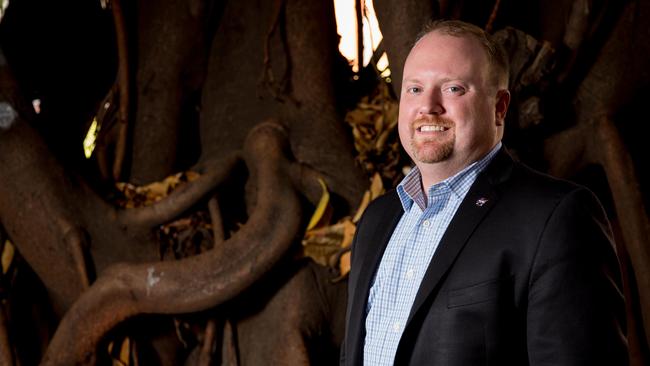Would you launch a spacecraft to Mars without all the computer systems built? Would you build many of the Mars systems in space itself?
That’s exactly what will happen when we venture to the red planet, says Jason Crusan, director of advanced exploration systems at NASA.
In an interview with The Australian Crusan discusses an array of missions possible before the final trip to Mars in the mid-2030s. Many of them will be trips that test new technologies.
You can listen to the 40-minute discussion through the link on the tweet. This story is part 2 of the discussion. The first part, on artificial intelligence, virtual and augmented reality in space, is found here.
There seems two main aims of this space venture. One is to visit and maybe colonise Mars. The other is more profound: changing human beings into a race that can survive in space independently, that makes its own rocket fuel, grows its own food and maintains sufficient water and oxygen for breathing.
That all has to happen in the lead-up to visiting Mars.
Crusan says travelling to Mars involves breaking dependence on the logistics chain of supply and resupply, available to near-Earth missions, and dependence on people on the ground.
With Mars, a radio signal takes 20 minutes to travel in each direction. “You don’t have mission control,” he explains. “The whole analogy of ‘Houston, we have a problem’ and they come back and say ‘Yes what is it?’ 40 minutes later is not something you can operate with Mars.” Not when a life-support system is malfunctioning, he says.

Launching “incomplete” spacecraft may be a new concept to many. But Crusan says scientists will have time to build and install some of the spacecraft software systems needed later on during the months of travel involved.
At NASA, Crusan is responsible for planning the architecture for the journey and leads the technology development.
The plan is not to go directly to Mars. Journeying will involve either or both our moon and Mars’s moons, notably Phobos. “We need to learn how to operate away from the comfort of Earth. We don’t have an opportunity to learn that if we go straight to Mars.”
Equipment for Mars initially can be tested on the International Space Station, but to break the umbilical cord of Earth dependency the big tests must happen farther afield.

In one unusual preparatory operation, NASA plans to capture a bolder from an asteroid and force it to encircle the moon. The moon will have a moon. The exercise will test propulsion systems.
“One of the missions we’d like to do is redirect an asteroid, a boulder off an asteroid actually, bring a boulder back,” he says.
“We’re going to add habitation elements to it, and we’re going to send crews up to explore and do science on that asteroid. We’re going to demonstrate operations far away from Earth. We want to demonstrate the propulsion systems we have.
“But there’s a lot of debate in US politics whether we do this mission.
“The biggest thing that could come out of the election in US politics is they may tell us to do something different instead of doing this asteroid mission.”
Crusan says both sides of US politics support going to Mars, and cancelling NASA would be “political suicide” there. But NASA hopes the new president will commit to Mars the way president John F. Kennedy committed to the moon in 1961.

As well as building software during the journey, development of landing systems could occur on a Martian moon.
“As we build the systems to go out into deep space, we’re going to build the systems to live in space first. These are the habitats, the engines that take us to and from destinations. Then you build the systems to let yourself land on the planetary surfaces. But you can start doing missions and test them ahead of time while you’re still building the landing systems.”
Crusan says the final journey to Mars may be launched from Phobos. “If you go to the surface of Phobos, 65 per cent of the sky is Mars. It also blocks over 30 per cent of the radiation environment.
“Scientists believe Phobos is made up of 20 per cent water as well. If there is a large concentration of water around Phobos, we could harvest the water there and make rocket fuel. That may fundamentally change how we land on the surface of Mars.”

Crusan says we now know there is a lot of water on Earth’s moon. “A US scientist at the Lunar and Planetary Institute has estimated that one polar cap of the moon has an equivalent of a space shuttle launch for every day for 2000 years, if you were to convert that water into rocket fuel. These are your fuel depots.” (The science is about solar panels to split water molecules into oxygen and hydrogen to make rocket fuel.)
He envisages missions to our moon and Phobos will take place in the 2020s and by the end of that decade humans will travel Mars-type distances, and for two to three years’ duration. Humans will land on Mars in the late 2030s.
Astronauts can stay two weeks on Mars or an entire year but nothing between because of the changing orbital alignments of Earth and Mars.
Published in The Australian newspaper.
